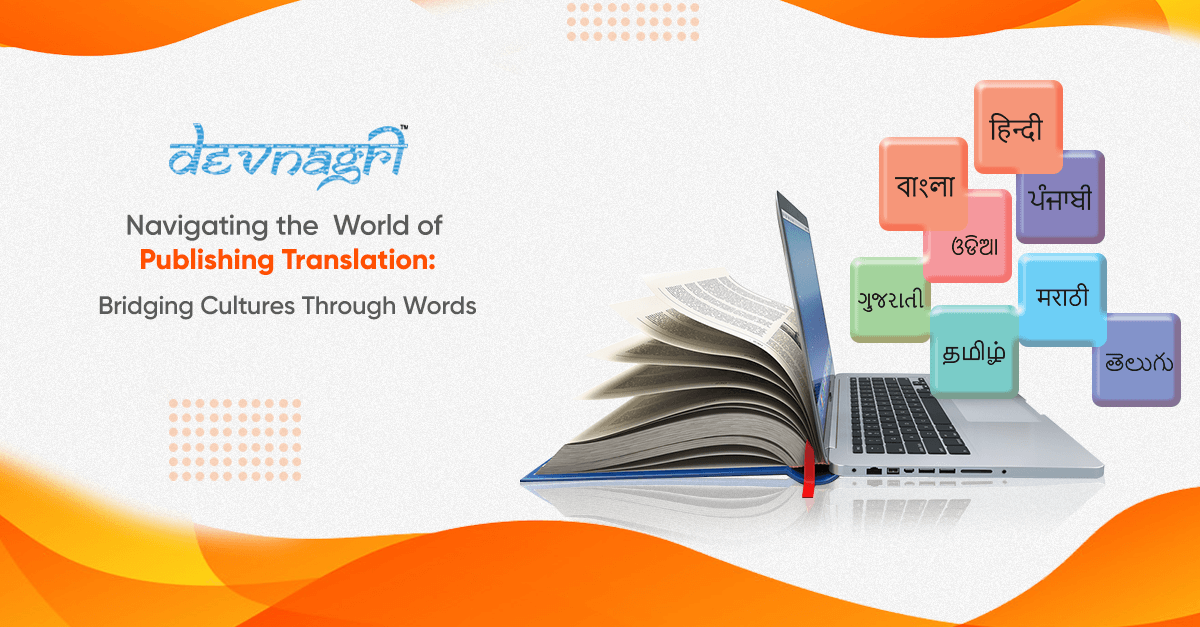
In today’s globalized world, the exchange of ideas, stories, and knowledge knows no bounds. One of the most powerful tools in facilitating this exchange is through publishing translation. As languages and cultures intertwine, the need for skilled translators to bridge these gaps becomes increasingly crucial. In this article, we’ll delve into the fascinating realm of publishing translation, exploring its importance, challenges, and impact on literature and culture worldwide.
Also Read: Navigating the Complexities of Finance Translation: Ensuring Accuracy Across Languages
Understanding Publishing Translation
Publishing translation involves the conversion of written material from one language to another, ensuring that the essence, meaning, and cultural nuances of the original work are preserved. This process extends beyond mere linguistic conversion; it requires a deep understanding of both source and target cultures, as well as a mastery of language and literary techniques.
The scope of publishing translation is vast, encompassing various forms of literature, including novels, poetry, essays, academic papers, and more. Additionally, it extends to other written materials such as websites, marketing materials, legal documents, and technical manuals. In essence, publishing translation serves as a gateway for individuals worldwide to access a diverse range of content, regardless of linguistic barriers.
Also Read: Navigating Global Markets: The Vital Role of Website Translation
Importance of Publishing Translation
The importance of publishing translation cannot be overstated. It serves as a catalyst for cultural exchange, fostering understanding, empathy, and appreciation for diverse perspectives. Through translated works, readers gain insights into different societies, traditions, and worldviews, enriching their own understanding of the world.
Moreover, publishing translation plays a pivotal role in preserving literary heritage. By translating classic and contemporary works into multiple languages, these literary treasures are safeguarded for future generations, ensuring that they remain accessible and relevant across time and geography.
From a commercial standpoint, publishing translation opens up new markets and opportunities for authors, publishers, and other stakeholders in the literary industry. It allows books to reach a wider audience, thereby increasing sales potential and fostering international collaborations.
Also Read: Exploring the Power of Translation APIs: Breaking Language Barriers in a Connected World
Challenges in Publishing Translation
While publishing translation offers numerous benefits, it also presents significant challenges. One of the foremost hurdles is the task of capturing the nuances and intricacies of the original text. Language is inherently complex, and certain concepts may not have direct equivalents in other languages. Translators must navigate these linguistic hurdles with precision and creativity, often resorting to paraphrasing or cultural explanations to convey the intended meaning effectively.
Cultural differences pose another challenge in publishing translation. What resonates with one audience may not necessarily have the same impact in another cultural context. Translators must be sensitive to these cultural nuances, adapting the text accordingly to ensure that it resonates authentically with the target audience.
Additionally, tight deadlines and budget constraints are common challenges faced by translators and publishers alike. The demand for fast turnaround times can sometimes compromise the quality of translation if not managed effectively. Moreover, allocating sufficient resources for translation projects, including hiring skilled translators and editors, can be a logistical challenge for publishers.
Also Read: Unlocking Boundless Communication: The Significance of English to Telugu Translation
Impact of Publishing Translation
Despite these challenges, the impact of publishing translation on literature and culture is profound. Translated works have the power to foster cross-cultural understanding, break down stereotypes, and promote dialogue between diverse communities. They serve as a bridge that connects people from different backgrounds, fostering a sense of global citizenship and shared humanity.
Furthermore, publishing translation contributes to the enrichment and diversification of literary landscapes worldwide. By introducing readers to voices from around the globe, translated literature expands horizons, stimulates intellectual curiosity, and fosters a deeper appreciation for the richness of human experience.
In the digital age, technology has also played a significant role in facilitating publishing translation. Machine translation tools, while not without their limitations, have made translation more accessible and efficient, enabling faster dissemination of information and ideas across language barriers.
Also Read: Enhancing Global Reach: The Importance of Subtitle Translation
Conclusion
In conclusion, publishing translation serves as a gateway to a world of diverse voices, stories, and ideas. It transcends linguistic boundaries, enriches cultural exchange, and fosters mutual understanding among people from different backgrounds. While it poses its own set of challenges, the impact of publishing translation on literature and culture is undeniable. As we continue to navigate an increasingly interconnected world, the role of translators and publishers in facilitating cross-cultural dialogue remains more critical than ever. Through their efforts, we can continue to bridge divides and build a more inclusive and interconnected global community, one word at a time.





